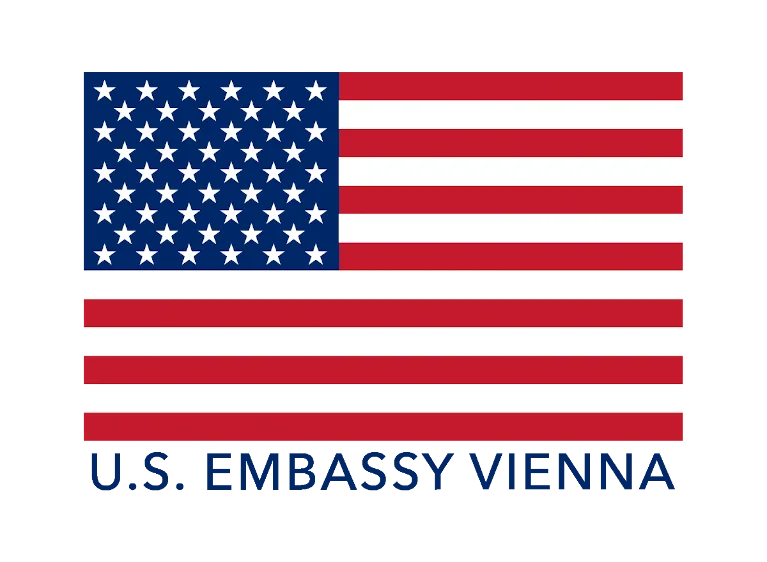Published November 20th, 2023
Interview
by Dolores Hunsky
The anthology Tinted Trails: Exploring Writings in English as a Second Language (2023) has been published and anyone who has seen it knows that it looks as alluring as a book possibly could. From an incredible cover design to unique illustrations within the pages, Tint Journal’s very own art editor Vanesa Erjavec has done an astounding job of making the book look like the piece of art that it is. The art historian, linguist, illustrator, and digital artist, she is not afraid to tackle any challenges or try out new styles. She has illustrated and designed several books and magazines, and continues to impress with her art in various forms, including traditional art and graphic design.
Dolores Hunsky: Thank you, Vanesa, for once again honouring me with the opportunity to work with you. This time, we’re not talking about one of our projects, but about the anthology Tinted Trails that has just been released. You are Tint Journal’s art editor and the illustrator and designer of their first printed book. If you had to describe yourself as an artist, which words would you use?
Vanesa Erjavec: I would describe myself as a stubborn perfectionist. At times insecure —perhaps more often than not — but I do think that as my journey progresses and I am taking on more and more projects, I am growing and there’s less insecurity and doubt. I’m starting to focus more on how I can improve and find new styles to explore.
Dolores: I still fondly remember the day we’ve met — the day I saw your art for the first time. I think you’ve grown a lot as an artist and an individual. Although your artistic journey has only begun, you’ve done quite a few interesting projects already. As people are getting to know you, what can you tell them about your artistic path so far? Where did it all begin?
Vanesa: My journey started in my childhood, in my imagination. I was the kid who enjoyed books and the world of fantasy. Art enabled me to express myself, to transform thoughts into tangible things, so they’re not just stuck inside of my head.
My parents were incredibly encouraging; I was always free to explore the limits of art in unconventional ways. I was lucky to have the space and creativity to embark on this artistic path. My mum played a huge role in it, as she was an artistic person herself. She also had that inkling, the understanding what expression in itself does to you. Besides the encouragement from very early on, she also provided criticism. She didn’t give me the stereotypical motherly treatment of simply loving everything I created just because I was her daughter. Yes, she complimented my work, but also made me think about what I created and what my intentions were; what I was trying to convey with the specific piece of art. She asked questions and drew attention to details that could have made the drawing better, more realistic, or otherwise help with expressing whatever it was that I wanted to express. She did this in a way that never felt like I was being criticized. It felt like she was trying to help me grow and I think that I’ve adopted that approach and it is something that I really appreciate in my friends and my colleagues today. I value constructive critique and I do think that is what makes me a good artist — that I am able to take the criticism, but not take it personally.
Dolores: What would you say made you continue exploring the artistic waters? What is it that you love about drawing or illustrating?
Vanesa: Capturing moments in time. I love photography, which possesses the ability to capture a single instant that would otherwise be lost. It helps me as well, because I am a very forgetful person. All the memories that I can create — whether with photography or with drawing — they represent something I enjoyed at the time. Sometimes it’s not even a physical thing, but an image in my head, a feeling that I have and want to visualize.
Dolores: Now that we know a little bit about your artistic endeavours, I wonder who you are as a member of Tint Journal’s team.
Vanesa: I am acting as the art editor, primarily for their biannual publications. Lisa [Tint Journal’s founder and editor-in-chief] approached me with the offer to create and design the cover of Tinted Trails, and illustrate the collected works. I immediately agreed. Growing up, books influenced me immensely and now I wish to create my own and perhaps inspire others.
It all starts the moment you see the book on the shelf. That’s why book covers exist and why they are an art form in itself. When you’re browsing and buying or borrowing books, you usually choose the book based on the visual — at least at first — and only afterwards because the story intrigues you. You look at it and think “This colour or this design caught my attention, now I’m going to look at what’s inside.”
Dolores: So, you judge books by their covers?
Vanesa: Yes! I absolutely do and I think a lot of other people do too. Otherwise, the cover design wouldn’t be such a crucial step in creating a book.
Dolores: The anthology that everyone impatiently awaited has finally been released. What is your favourite work of art that you’ve done for Tinted Trails?
Vanesa: I cannot pick a single drawing. I believe that the entire book — with all of its aspects, all of its illustrations, the cover, everything – is a work of art in itself. So, I have to say that the whole book is my favourite work of art.
Dolores: Since not many people know what goes on behind the scenes: How did the process of creating and even coming up with ideas look?
Vanesa: It all starts with gathering ideas. As an illustrator, you try to incorporate as many of them as you can, while making sure you produce the best art possible.
Once I got a sense of what everyone’s expectations were, I did my own research. As an art historian, I’m aware of how important this step is. You have to be aware of what is trending and what is marketable and appropriate considering the product in question. I try to make sure that the illustrations fit the text. They should never overshadow the writing itself, but only add to it and subtly pull people in.
I like to have options, so I created different versions that I presented to the team based on the expectations that we’ve discussed. Taking their reactions and comments into consideration, I’ve adapted or changed things around until we were all satisfied with the final product.
The biggest challenge was the test print. You think you’re done and everything is well, but then the test print shows the actual colours, the cover, inner illustrations, and the style of the book as a whole. It’s very different than looking at it on a tiny screen and it’s a crucial step in the process of creating a book. It gives you the opportunity to adjust the details and add final touches.
Dolores: What would you say has been your favourite part of this project and why? What about the least favourite?
Vanesa: My favourite part was the opportunity to be able to play around with a wider variety of styles than I usually do. To have the absolute trust and support of the team that pushes you to improve with their comments and suggestions. This wasn’t just a project for Tint, it became a personal project that enabled me to investigate new styles and improve as an artist – it has been a great privilege.
As for the least favourite part … As much as we’ve all gotten used to Zoom calls and being online, it is very difficult to work as a coherent team on such an extensive project, when we’re all staring at each other from different screens. Especially when it came to these final stages, it would have been much easier if all of us could have been in the same room. But we’re all volunteers — we have jobs and other projects — so it can be difficult to meet.
Dolores: You’ve illustrated a few books already. Was this one in any way different? You’ve mentioned exploring a whole new art style, but you had to make it work for all these stories from all over the world. Have they touched you in a different way, perhaps, or provided any additional challenges?
Vanesa: Absolutely. I think they were a big part of why I chose the illustrating style that you can see in the book. Being an anthology, it has so many different aspects, so many different voices, people, and stories. I really wanted to convey that with the illustrations as well. I knew I couldn’t make something realistic or extremely colourful; it had to be minimalistic and it had to connect all of the works together, each of them adding something different, something new. That’s how I felt when I was reading these stories — as if they were a unity of voices. I think when people read the anthology, they will be able to add their own voice to it, their own thoughts. There’s something for everyone in this book.
Dolores: Vanesa, thank you again. It has been a pleasure. Before we end this interview, could you tell me what you are currently working on and where can people find you?
Vanesa: Thank you. Aside from the Tint-related responsibilities, I am currently trying to establish my own business. I’m starting with some tote-bags and stickers, but will hopefully expand in the future. There’s a lot of fun stuff coming very soon and I’m looking forward to it. People can find me on social media (Instagram, Tiktok, Facebook) or they can see what I’m up to on my website. They can check out my Ko-fi page. So, I can be found basically anywhere, under the name creativityvexus or if they just google my name — I’m sure something will pop up.
Nationality: Slovenian
First Language(s): Slovenian
Second Language(s):
Croatian,
English,
German
Supported by:


